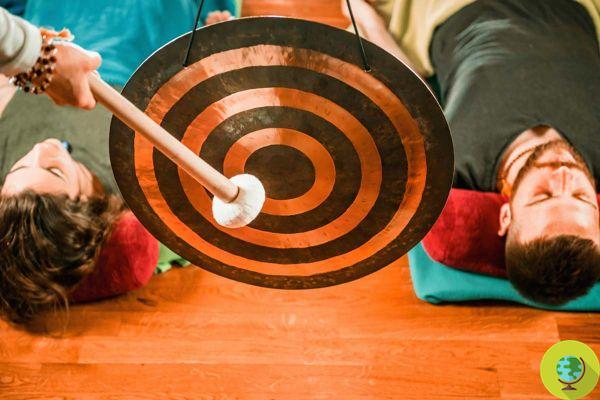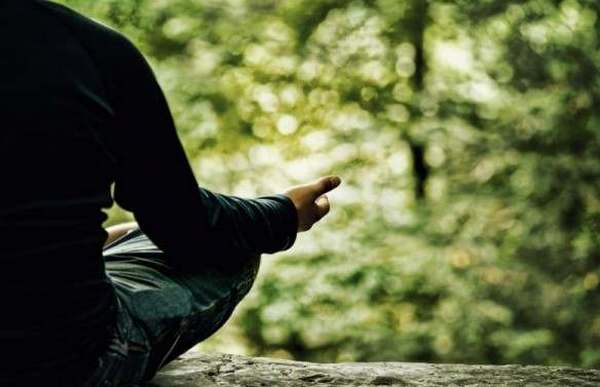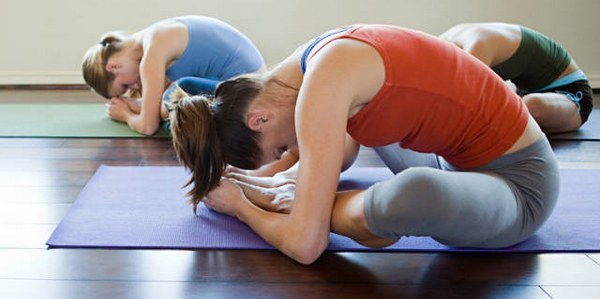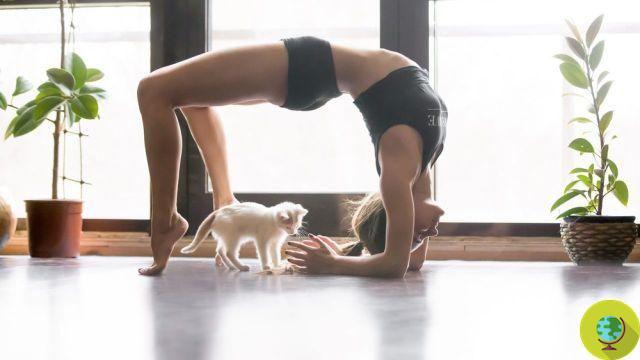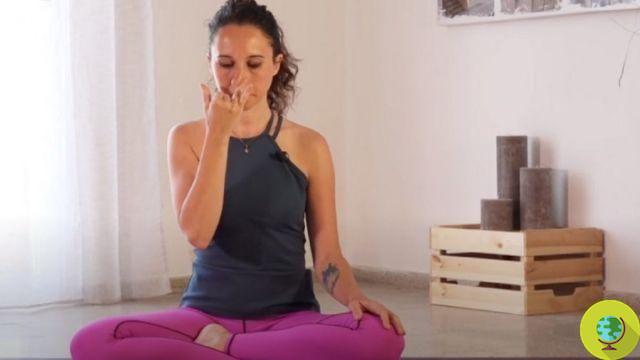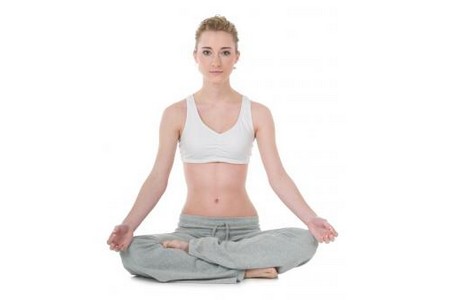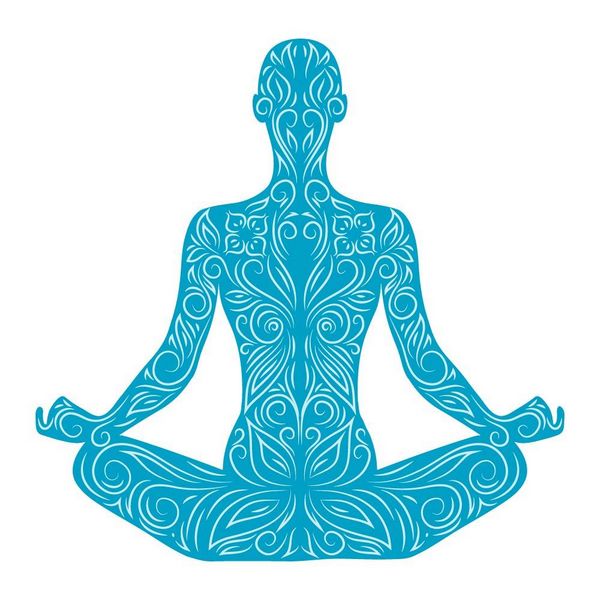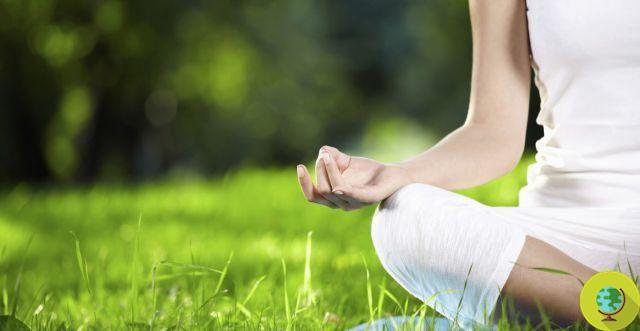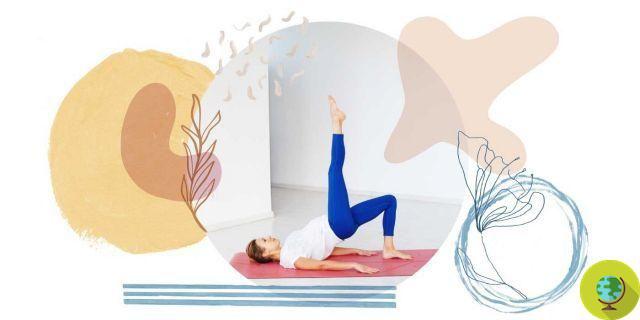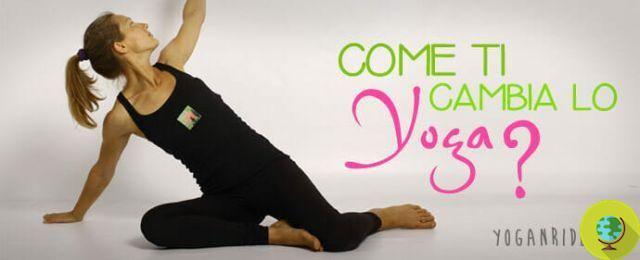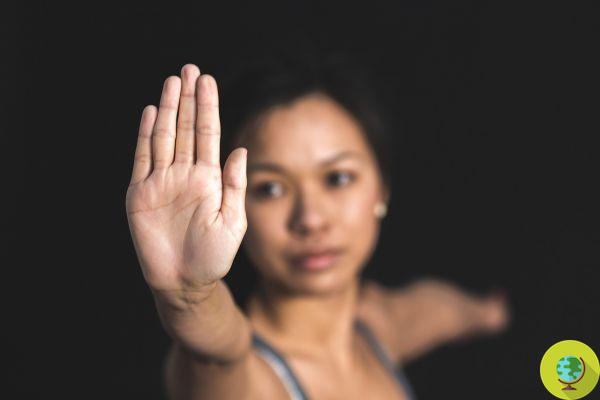The Pigeon Pose is a fairly complex asana to perform, especially if you are a beginner. Here's how to do it, the benefits and risks.
Don't store avocado like this: it's dangerousrisks-">The Pigeon Pose is a fairly complex asana to perform, especially if you are a beginner. Here's how to do it, the benefits and risks.
La pigeon pose is a yoga asana, which helps to open the hips and relieve lower back pain. While it can be a great way to increase flexibility and stretch muscles, it is important to perform the movement correctly to prevent injury or strains. Let's find out how it is performed, all the variations and what are the benefits and risks of the Kapotasana.
Index
Variants of the pigeon pose
The Pigeon Pose, known in Sanskrit as Kapotasana, stretch your hips and lower back.
There are many variants, but the most common forms are:
- Classic Pigeon Pose
- Pigeon pose at rest
- Pose of the king pigeon
Each variant has different traits and degrees of difficulty. Since the pose of the pigeon requires some flexibility, you need to do a slight warm-up before doing it. There are some perfect asanas to incorporate into your warm-up routine, such as:
- Downward facing dog
- Cat-cow
- Child's pose
- Pose of the sphinx
After your warm-up, we recommend that you start with the classic pigeon pose, followed by the resting pigeon pose and finally the king pigeon pose. This sequence will gradually prepare your body for more difficult variations in order to prevent injury and help you perform the asana correctly. (Read also: Salute to the Moon: what it is, the benefits, how and when you should perform the Chandra Namaskara)
Benefits of the pigeon pose
Practicing this asana regularly offers many benefits as well benefits. Here are the main ones.
Improve the opening of the hips
This pose focuses on theopening of the hips, and improves the mobility and flexibility of the joint. It has also been shown to stretch the hip flexors and lower back, which are commonly tightened due to sitting all the time. Regular stretching of these muscles can also relieve pain in the lower back or hip.
Benefits to the psoas and rectus femoris
Due to sitting too long or exercises such as running and cycling, theiliopsoas and rectus femoris they tighten and shorten. With the Pigeon Pose you work on these muscles as you stretch your leg back and bring your pelvis towards the ground.
Improve your posture
When we practice the pigeon pose with the upper body in an upright position, we maintain the flexible spine and we reduce the tension in the front of the bust. It is a great asana that works on the entire spine, from the pelvis to the chest.
Reduces lower back pain and stiffness
The pigeon pose helps to stretch the hip flexors and to restore a healthy lumbar curve. It also increases mobility in the front of the body and gently activates the muscles in the lower back. All of these factors together make it an excellent asana for reduce lower back pain and muscle stiffness.
It helps protect the knees in other asanas as well
One of the common problems in yoga is that the lack of mobility in the hip joint leads to more stress on the knees. This increases the risk of problems, but if you learn how to do the pigeon pose well and widen your hips well you go to protect the knee joint also to perform other asanas.
Promotes digestion
It is believed that this pose improve digestion because it stretches the lower abdomen. This can help with peristalsis, which is the movement of digested food through the intestinal tract.
Relieves stress and improves mood
Finally, according to the Ayurvedic medicine, stress, sadness and fear are stored in the hips, and practicing the pigeon pose regularly can help alleviate these negative feelings and internal worries. (Read also: Yoga: this is how it transforms body and mind from the first lesson onwards)
How to perform the Pigeon Pose
If you would like to learn the pigeon position, here it is explained step by step.
Classic laying and at rest
On a yoga mat, start with the Downward facing dog position. To do this, get on all fours and place your hands in front of you on the mat, palms down. Press on your hands and feet, straighten your legs and lift your hips towards the sky. Your body will be in an inverted V position.
- Then, lift your right leg off the ground and bring your right knee behind your right wrist. At this point, he rotates his right shin so that it is parallel to the front of the mat.
- As you bring your right leg onto the mat, keep your left leg straight as it reaches the ground.
- Bring your right knee outward so that it is further to the right of your hips. From here, gently lower your buttocks to the ground, but make sure you keep the weight evenly distributed between both hips. If it's too hard, place a folded towel under your right buttock.
- Place both hands under your shoulders and gently press on your palms to straighten and lengthen your spine. Look straight ahead and feel the stretch; at this point, you have reached the classic pigeon pose.
- Then, take a deep breath and as you exhale, lower your torso onto your right leg and stretch your arms straight out in front of you, with your elbows slightly bent. Place your forehead on a yoga block or cross forearms in front. If you find this position uncomfortable for you, simply stretch forward until you feel comfortable.
- Gently pull your shoulders away from your ears in a relaxed position.
Hold this position for 5-10 slow, deep breaths; repeat on the other side.
Pose of the king pigeon
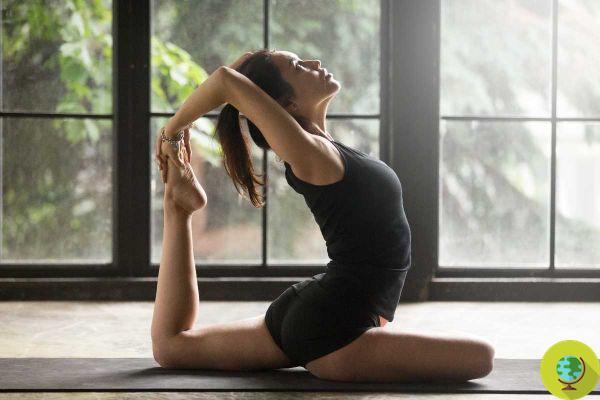
@TeamFutures/123rf
Follow the steps above to enter the classic pigeon pose and from here with the right leg bent and the left leg straight, bend the left knee to bring the left foot towards the back. Make sure you keep the tip flexed.
Then, lift your left arm skyward, slowly bend your elbow back and grab your left foot. He can lift his chin slightly and look up, but avoid bending his neck back.
Hold this position for 5-10 slow, deep breaths; repeat on the other side.
For most beginners, this move will be very difficult and could increase the risk of injury. Try it only if you have good flexibility and can easily perform the first two asanas. (Read also: Try these 10 breathing techniques to do 5 minutes every day to eliminate stress and ground yourself in the present)
risks
Although the pigeon pose is generally safe, you may increase the risk of injury, especially if you perform the stretch too aggressively and quickly beyond your abilities.
If you have hip, knee or lower back problems it is best to avoid it altogether, unless advised by a healthcare professional. Women in pregnancy or with skeletal muscle injuries, mild to moderate, should speak to their doctor first.
Additionally, there is a growing concern that this asana may over-stretch tendons of the buttocks, which attach to the hip bones. Over time, according to some studies this pose can weaken the tendons and cause hip problems.
Among other risks we also point out possible injuries to the knee, due to excessive pressure on the knees. To avoid problems, it is best to place a folded towel under the buttocks and thigh in order to improve positioning of the hips and knees. This will reduce the pressure and the risk of injury
- Follow us on Telegram|Instagram |Facebook |TikTok |Youtube
on the yoga could it be interesting for you:
- Yoga, the best way to have an iron abs: the 8 most effective asanas for a flat stomach
- 10 reasons to practice yoga (including sex)
- Yoga and meditation in nature: all the benefits of practicing surrounded by greenery
- Finding physical shapea and well-being thanks to yoga and nutrition, even if you have little time




